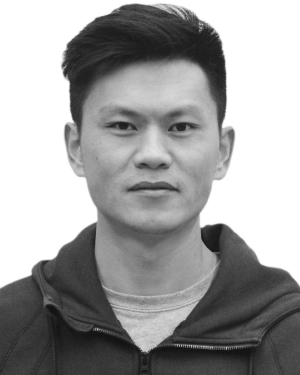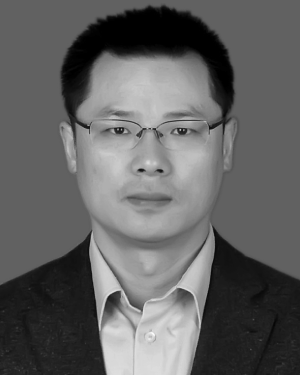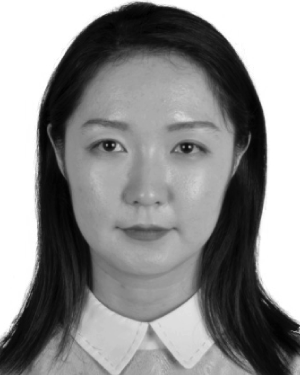The proposed DQFSA automatically selects a small set of highly differentiated features for malware detection task without human intervention. DQFSA trains an agent throug...
Abstract:
Machine learning based malware detection has been proved great success in the past few years. Most of the conventional methods are based on supervised learning, which rel...Show MoreMetadata
Abstract:
Machine learning based malware detection has been proved great success in the past few years. Most of the conventional methods are based on supervised learning, which relies on static features with labels. While selecting static features requires both human expertise and labor. New selections, which fix features from a wide range, are handcrafted by careful manual experimentation or modified from existing methods. Despite their success, the static features are still hard to be determined. In this paper, a Deep Q-learning based Feature Selection Architecture (DQFSA) is introduced to cover the deficiencies of traditional methods. The proposed architecture automatically selects a small set of highly differentiated features for malware detection task without human intervention. DQFSA trains an agent through Q-learning to maximize the expected accuracy of the classifiers on a validation dataset by sequentially interacting with the features space. The agent, based on an \epsilon -greedy exploration strategy and experience replay, explores a large but finite space of possible actions and iteratively discovers selections with improved performance on the learning task. Actions are a set of reasonable choices, which indicate whether a feature is chosen or not. Extensive experimental results indicate that the proposed DQFSA outperforms existing baseline approaches for feature selection on malware detection with minimum features, improves the generalization performance of the learning model and reduces human intervention. More specifically, the proposed architecture’s underlying representation is robust enough for re-calibrating models to other domains of information security.
The proposed DQFSA automatically selects a small set of highly differentiated features for malware detection task without human intervention. DQFSA trains an agent throug...
Published in: IEEE Access ( Volume: 7)
Funding Agency:

College of Computer Science, Sichuan University, Chengdu, China
Zhiyang Fang received the M.S. degree in computer science and technology from Sichuan University, Chengdu, Sichuan, in 2009, where he is currently pursuing the Ph.D. degree in computer science and technology. He is currently involved in research work on information security. His research interest includes software security.
Zhiyang Fang received the M.S. degree in computer science and technology from Sichuan University, Chengdu, Sichuan, in 2009, where he is currently pursuing the Ph.D. degree in computer science and technology. He is currently involved in research work on information security. His research interest includes software security.View more

College of Computer Science, Sichuan University, Chengdu, China
Junfeng Wang received the M.S. degree in computer application technology from the Chongqing University of Posts and Telecommunications, Chongqing, in 2001, and the Ph.D. degree in computer science from the University of Electronic Science and Technology of China, Chengdu, in 2004. From July 2004 to August 2006, he held a postdoctoral position at the Institute of Software, Chinese Academy of Sciences. Since August 2006, he...Show More
Junfeng Wang received the M.S. degree in computer application technology from the Chongqing University of Posts and Telecommunications, Chongqing, in 2001, and the Ph.D. degree in computer science from the University of Electronic Science and Technology of China, Chengdu, in 2004. From July 2004 to August 2006, he held a postdoctoral position at the Institute of Software, Chinese Academy of Sciences. Since August 2006, he...View more

College of Computer Science, Sichuan University, Chengdu, China
Jiaxuan Geng received the bachelor’s degree in computer science and technology from the Chongqing University of Posts and Telecommunications, Chongqing, in 2018. He is currently pursuing the M.S. degree in computer science and technology with Sichuan University, China. He is expected to get the degree, in 2021. His research interests include software security and cybersecurity.
Jiaxuan Geng received the bachelor’s degree in computer science and technology from the Chongqing University of Posts and Telecommunications, Chongqing, in 2018. He is currently pursuing the M.S. degree in computer science and technology with Sichuan University, China. He is expected to get the degree, in 2021. His research interests include software security and cybersecurity.View more

College of Computer Science, Sichuan University, Chengdu, China
Xuan Kan received the M.S. degree in computer science and technology from Sichuan University, Sichuan, in 2017. She is currently involved in research work on information security. Her research interest includes software security.
Xuan Kan received the M.S. degree in computer science and technology from Sichuan University, Sichuan, in 2017. She is currently involved in research work on information security. Her research interest includes software security.View more

College of Computer Science, Sichuan University, Chengdu, China
Zhiyang Fang received the M.S. degree in computer science and technology from Sichuan University, Chengdu, Sichuan, in 2009, where he is currently pursuing the Ph.D. degree in computer science and technology. He is currently involved in research work on information security. His research interest includes software security.
Zhiyang Fang received the M.S. degree in computer science and technology from Sichuan University, Chengdu, Sichuan, in 2009, where he is currently pursuing the Ph.D. degree in computer science and technology. He is currently involved in research work on information security. His research interest includes software security.View more

College of Computer Science, Sichuan University, Chengdu, China
Junfeng Wang received the M.S. degree in computer application technology from the Chongqing University of Posts and Telecommunications, Chongqing, in 2001, and the Ph.D. degree in computer science from the University of Electronic Science and Technology of China, Chengdu, in 2004. From July 2004 to August 2006, he held a postdoctoral position at the Institute of Software, Chinese Academy of Sciences. Since August 2006, he has been a Professor with the College of Computer Science and the School of Aeronautics and Astronautics, Sichuan University. His recent research interests include network and information security, spatial information networks, and data mining. He is currently serving as an Associate Editor for IEEE Access, the IEEE Internet of Things, and Security and Communication Networks.
Junfeng Wang received the M.S. degree in computer application technology from the Chongqing University of Posts and Telecommunications, Chongqing, in 2001, and the Ph.D. degree in computer science from the University of Electronic Science and Technology of China, Chengdu, in 2004. From July 2004 to August 2006, he held a postdoctoral position at the Institute of Software, Chinese Academy of Sciences. Since August 2006, he has been a Professor with the College of Computer Science and the School of Aeronautics and Astronautics, Sichuan University. His recent research interests include network and information security, spatial information networks, and data mining. He is currently serving as an Associate Editor for IEEE Access, the IEEE Internet of Things, and Security and Communication Networks.View more

College of Computer Science, Sichuan University, Chengdu, China
Jiaxuan Geng received the bachelor’s degree in computer science and technology from the Chongqing University of Posts and Telecommunications, Chongqing, in 2018. He is currently pursuing the M.S. degree in computer science and technology with Sichuan University, China. He is expected to get the degree, in 2021. His research interests include software security and cybersecurity.
Jiaxuan Geng received the bachelor’s degree in computer science and technology from the Chongqing University of Posts and Telecommunications, Chongqing, in 2018. He is currently pursuing the M.S. degree in computer science and technology with Sichuan University, China. He is expected to get the degree, in 2021. His research interests include software security and cybersecurity.View more

College of Computer Science, Sichuan University, Chengdu, China
Xuan Kan received the M.S. degree in computer science and technology from Sichuan University, Sichuan, in 2017. She is currently involved in research work on information security. Her research interest includes software security.
Xuan Kan received the M.S. degree in computer science and technology from Sichuan University, Sichuan, in 2017. She is currently involved in research work on information security. Her research interest includes software security.View more

